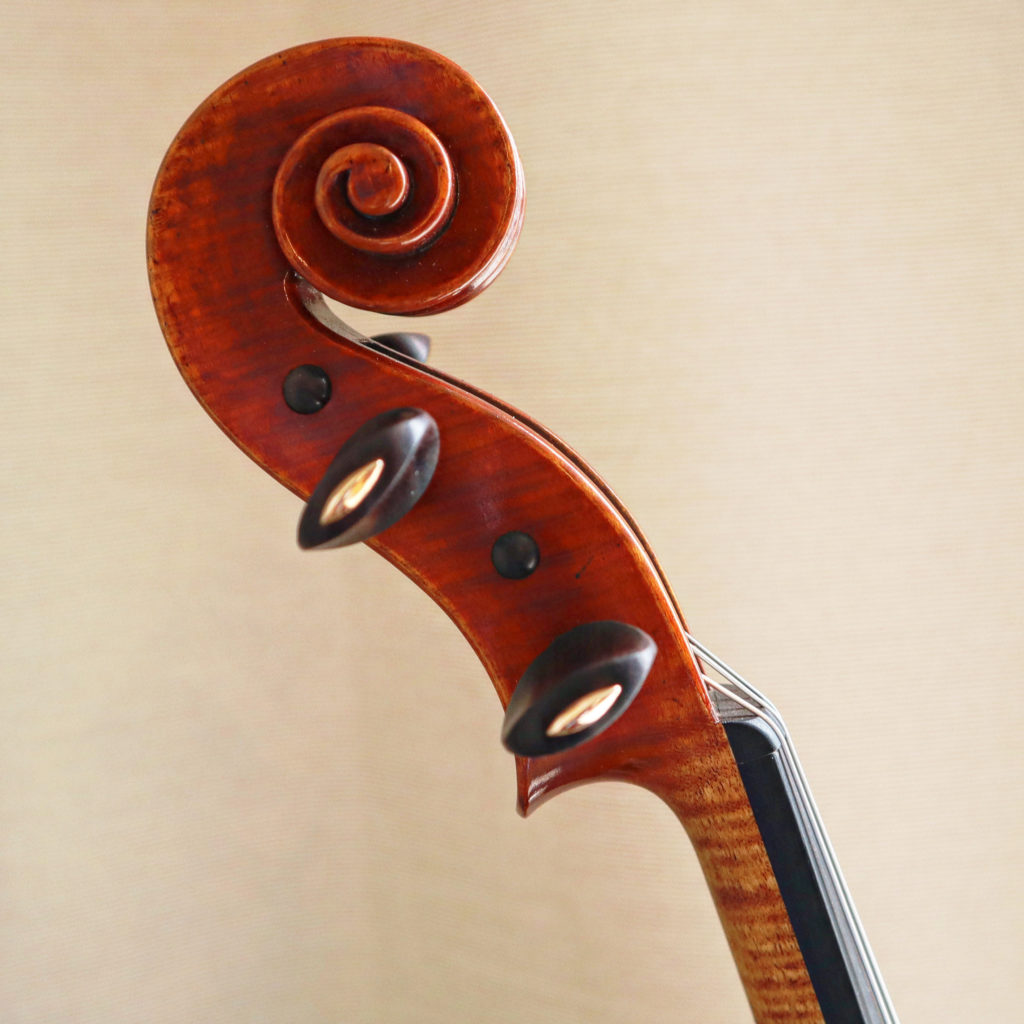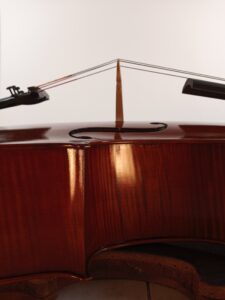When I acquired my 2013 Kiernoziak viola I had no idea what life had in store for me. It was September of 2019 and I was thinking of auditioning for grad school. I had just spent seven years in the workforce taking on new roles in arts administration looking for my niche outside of music making and that whole time I was hoping I could make a comeback. The thing is, I used to think I wasn’t “good enough” to go to grad school. Most musicians experience self-doubt on a regular basis, but I had quite a few hangups mostly because I almost never played during this time period. So once I mustered the courage to apply myself, it was full steam ahead!
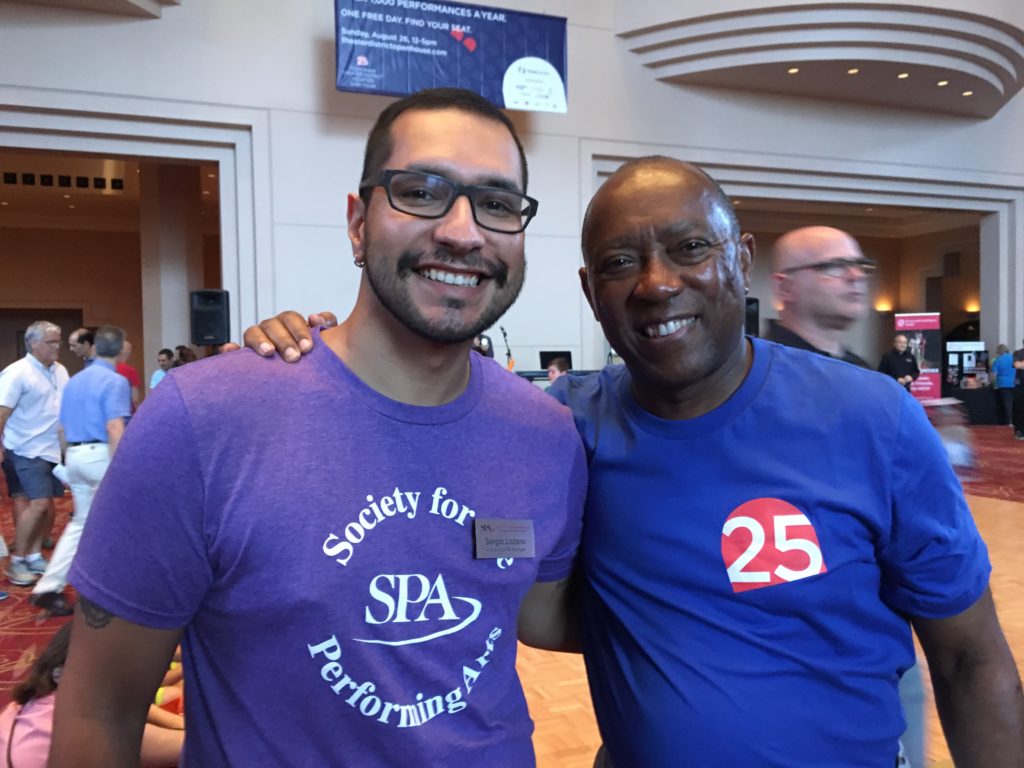
Five months of training led me down the path of rediscovering my voice on the viola with the support of colleagues and friends. It was a matter of time until I found out that I was psyching myself out for seven years! Don’t get me wrong, getting back into music had many challenges, but I was also not the disaster I thought I was. If it’s one thing a degree in music will teach a person it’s that the work is never finished. Music school has taught me that I am always a work in progress and that maybe yesterday was not as good as today or maybe today is better than tomorrow, but one thing will always be true: progress comes with time and today’s results will be yesterday’s lessons and tomorrow’s considerations.
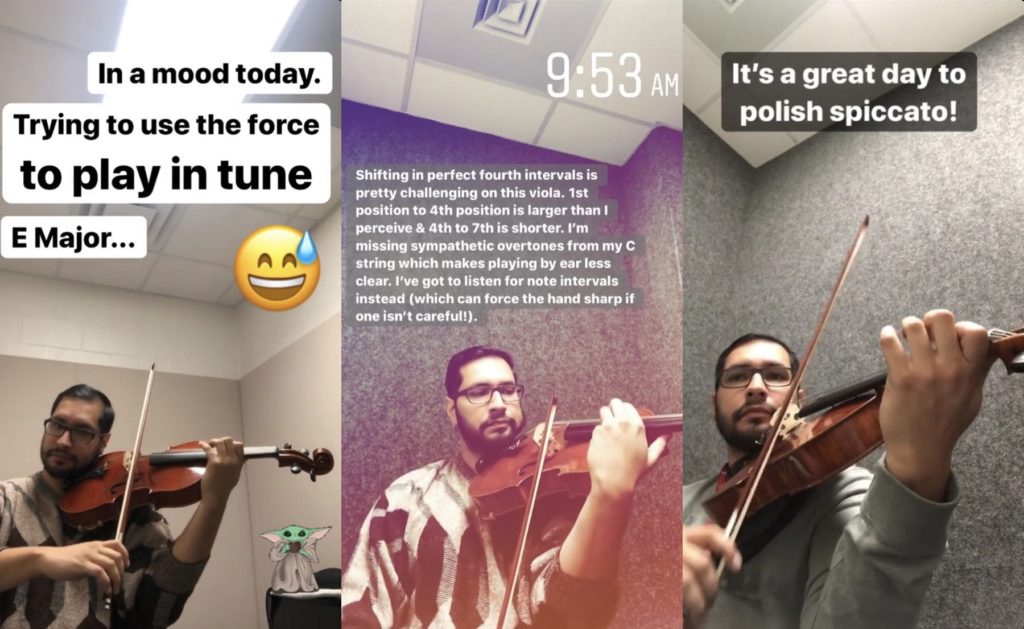
Since then, so many wonderful things have happened to me including achieving some major life goals: I got into grad school at DePaul University, moved to Chicago, started working at William Harris Lee & Co. The last two years were nothing but a time-warp with the pandemic. Everything felt too soon and too late simultaneously. We all adjusted amidst the overcast of uncertainty. My average week was about 60-70 hours a week of practicing, rehearsing, studying and working full-time. I truly learned the meaning of “where there’s a will, there’s a way.” Naturally, I wanted to celebrate my accomplishments in a creative and lasting way to mark this point on my journey.
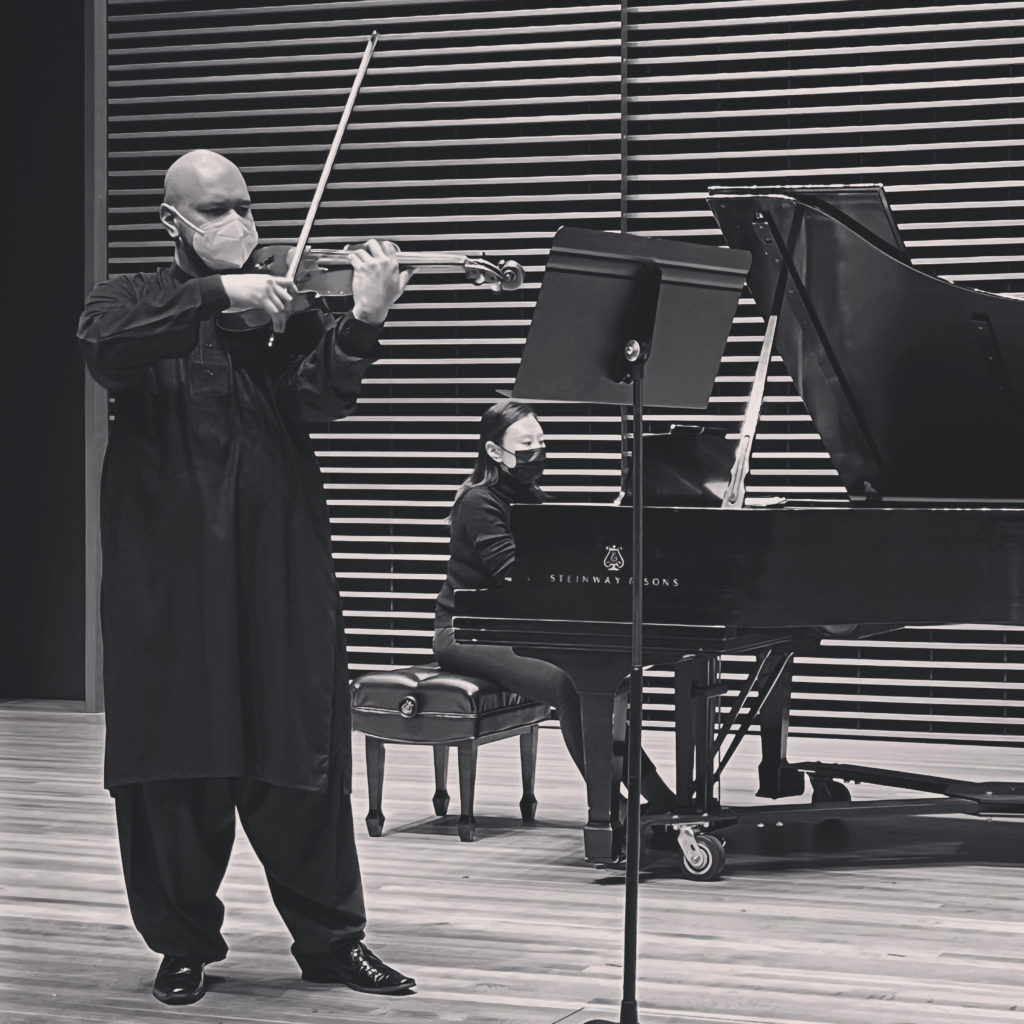
The last year of my master’s program arrived sooner than I was ready. I had to make an executive decision. I figured I waited so long for grad school, why not see where the trail ends? I had to see this through. So in January I prepared for post-grad auditions at a couple of schools and for the Civic Orchestra of Chicago. Around the same time I decided to replace my viola’s fittings on the contingency that I get accepted into Civic Orchestra of Chicago or Indiana University Bloomington. In the time leading up to my audition at IU Jacobs School of Music, I bought the new fittings through a supplier on a bet against myself. I had to wait until I knew the audition results, it was excruciating. I started to think, “If anything, I can just do this to celebrate graduating from DePaul.” Which was fine enough for me at that point, I already had the materials. But wouldn’t it be special if I actually met the goal?!
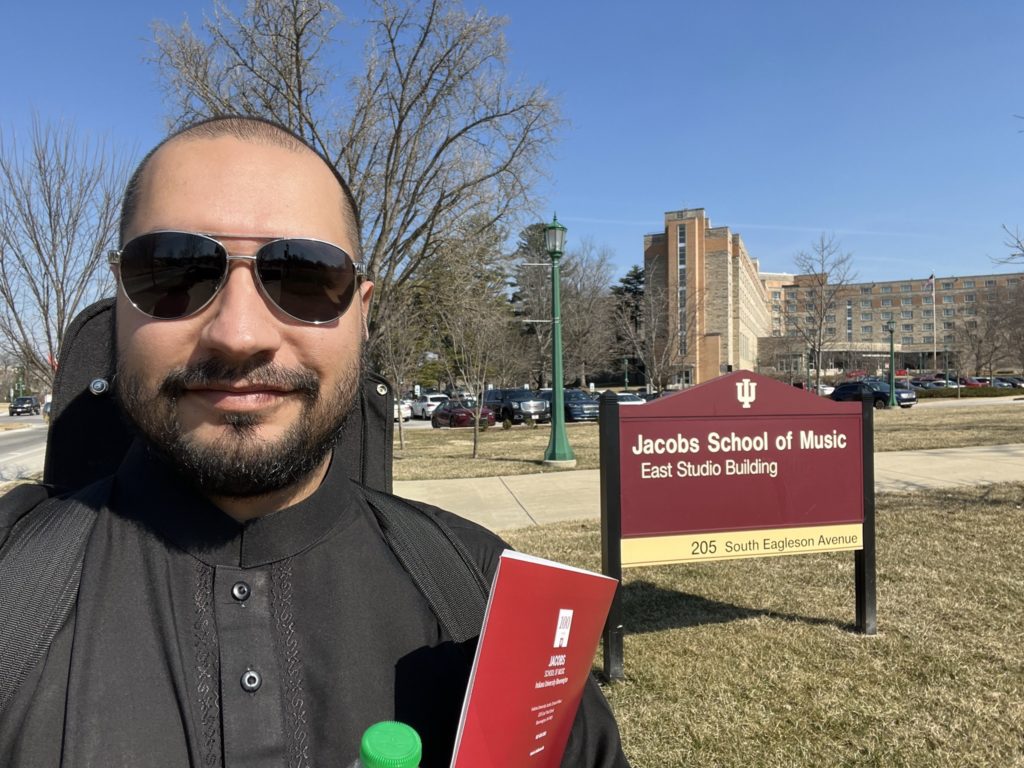
Unfortunately, I was not able to apply for Civic Orchestra this year. It was a small loss for me, but it was a relief and a wake up call for me to plan ahead. I hope next year will be my year. BUT I did get into IU Bloomington! It was a dream come true and now I could go through with the makeover for my viola. I took my viola and new fittings to our downtown Chicago location at the Fine Arts Building and one of our luthiers examined my instrument and the new fittings.
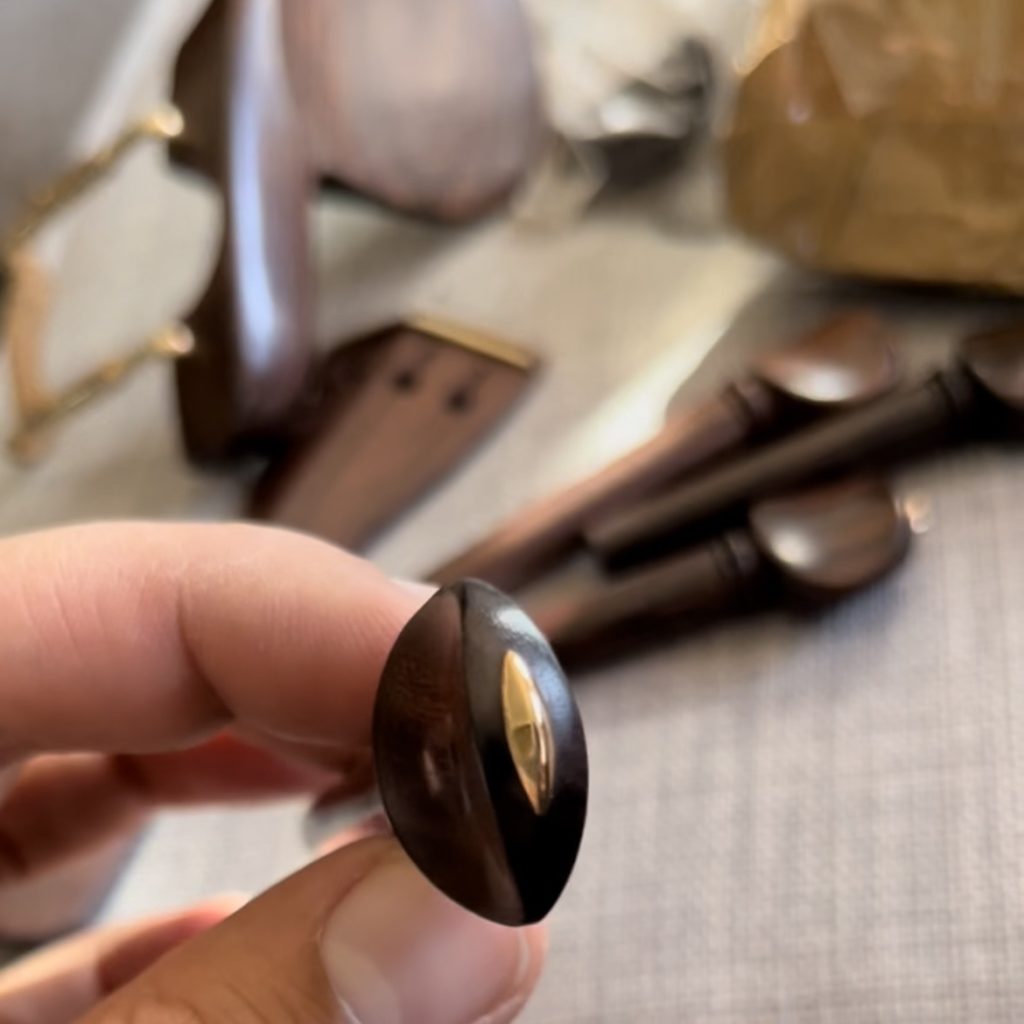
Once everything was in order, I waited for my beautiful viola’s new look to be revealed! It was exactly as I imagined it would be. The stark contrast between the ebony and deep red varnish was lightened with the softer look of rosewood. The grains on the new fittings showed clear under passing light and the shine of the gold trim was exactly the effect I was going for. It’s the prestige for me. Now, every time I take my viola out I am reminded that I worked really hard for this, not only arriving to where I am now, but I also went above and beyond what I used to think was impossible for me. I see my instrument as a reflection of my journey.
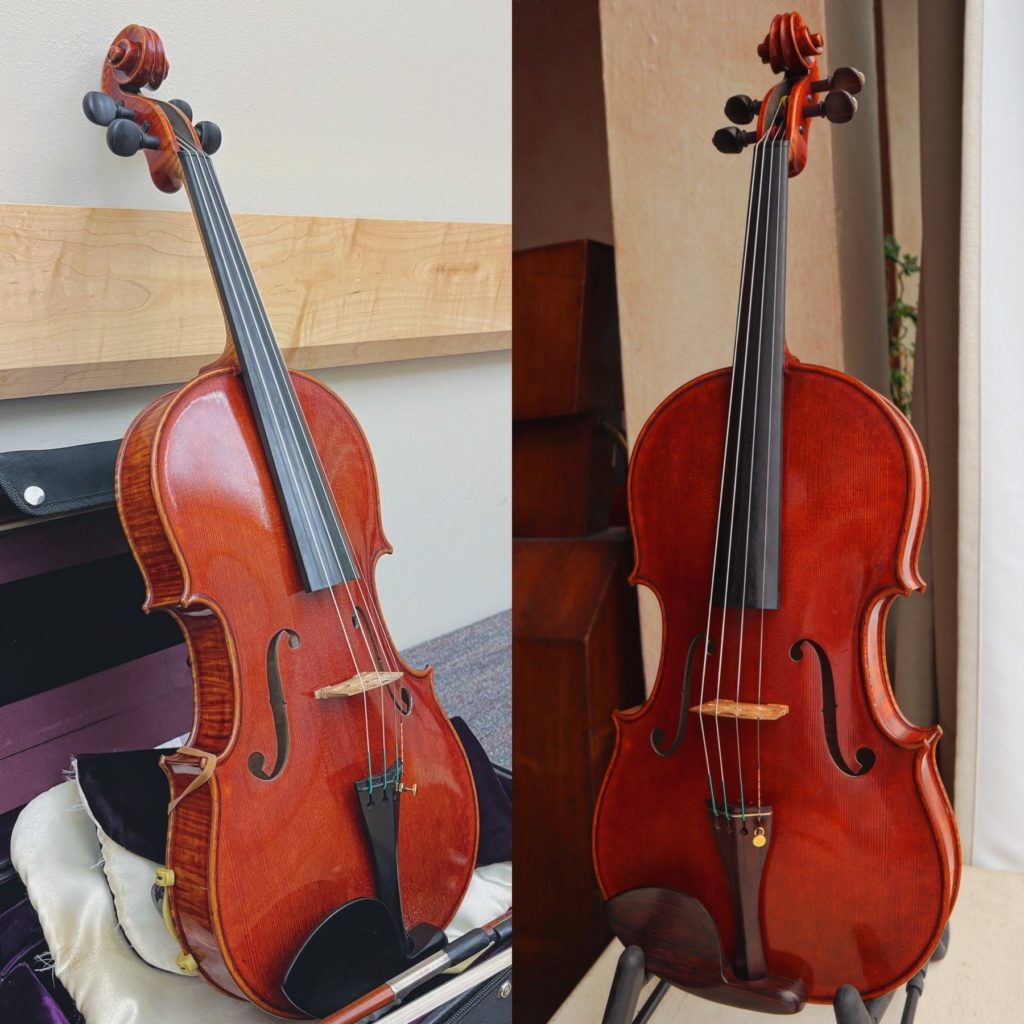
Overall, I was very satisfied with my experience as a customer of the shop. It was a little bit of an adjustment after I started playing my viola with their new fittings. In general, there were a few differences to note. Firstly, anytime an instrument is disassembled for repair or restoration, pressure is released. String instruments, such as the viola, are put under immense pressure from top to bottom, front to back. Any changes to the materials which support this pressure either in density or weight will affect the sound. However, in general the spirit of the instrument will endure and come through once the pressure returns and the instrument settles or “breaks in” with being played. The finer details of materials affecting sound is a blog topic for another time. Still, I will say that I am very pleased with how it sounds with the new fittings. Combined with a tonal adjustment and a few touch up spots and the makeover was complete!
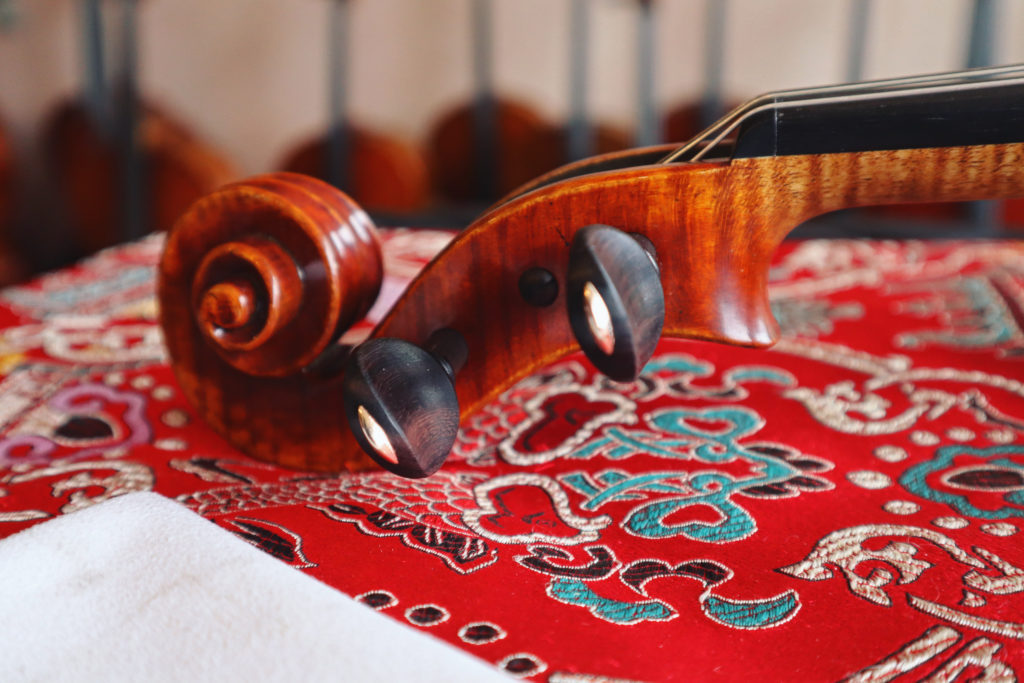
My viola sounds better than ever, but not because I switched my fittings. It sounds great because I feel great about it! The bond between my viola and me is stronger than ever. For example, part of the adjustment was something as simple as drawing sound from the C string. It didn’t necessarily sound different, but it felt different, so I had to find my approach to sound production again. I climbed through each note on a chromatic four octave scale which took 15 minutes to reach the summit and another 10-12 minutes to go back down. I applied an aural technique which I picked up from a colleague while studying for my grad school auditions which involves a great deal of focus and patience. But before I go on about this amazing approach to sound, I’ll have to do some more research and release the info in a guide to sound production and getting to know your instrument soon.
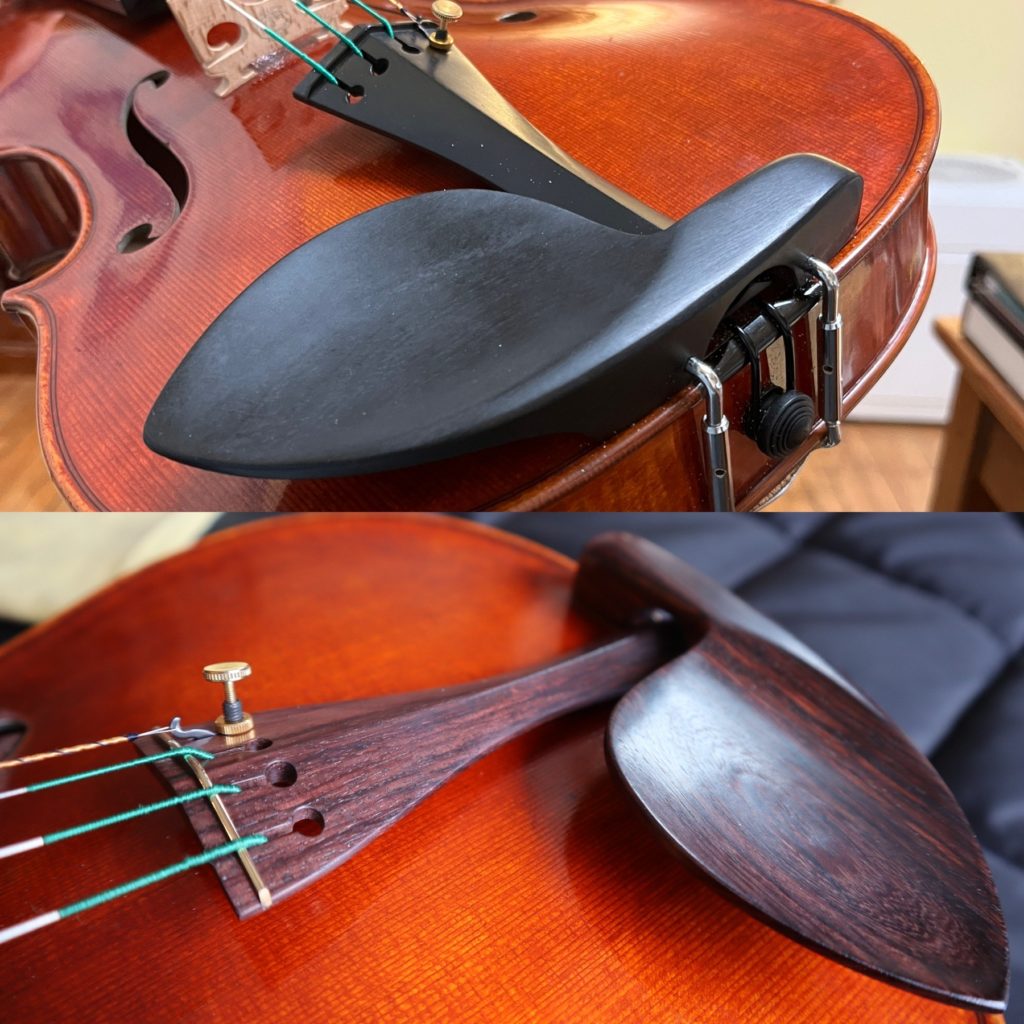
Treating yourself or your instrument to a makeover is therapeutic at best. I had been wanting to change my instrument’s fittings for a while before I decided to go through with it, but I made it special by celebrating an achievement which made my experience entirely worth it. If you’re thinking about changing your instrument’s fittings or already have, we’d love to hear from you. Share your story with us on Instagram by tagging us (@ williamharrislee) or by emailing [email protected].
It’s important to remember a few steps:
- Make an appointment to speak with a specialist. Our team can help you decide what to do about freshening up your instrument and you can pick the fittings that are a good match.
- Give your instrument a quick examination before submitting it to a shop or luthier. Does it have any issues you might want to address while it is in the shop, i.e. varnish wear, chipped or nicked edges, etc.?
- When you’re ready, get a Repair Evaluation. A Repair Evaluation is a report of any maintenance or repair recommendations as well as general comments. Any time an instrument goes to the shop our team inspects it with a three-point evaluation process.
- The first is at the counter with one of our Fine Instrument Specialists who will consult with you.
- The second point is with the luthier who will do the work. They will examine your instrument and offer feedback on the evaluation.
- The third point before the transformation can begin is the customer approval. Once the work is approved, it turns into a Customer Work Order and the makeover starts.
- When the work is done you will be notified to return to the shop and try it out. Aside from the initial “shock” of new fittings, it is very important that you examine your instrument carefully.
Like I said, the instrument will feel different and it’s important to remember that novelty tends to cloud one’s base judgment. I highly recommend two weeks of consistently playing the instrument before returning for a tonal adjustment to settle any peculiarities that may have changed with the setup of your new fittings.* It is also a good idea to avoid changing strings or rehairing your bow at the same time or even trying new rosin just to keep everything “apples to apples,” that way you’re only comparing the change of fittings and not other factors.
The tonal adjustment is not a part of the Customer Work Order unless specifically requested.*
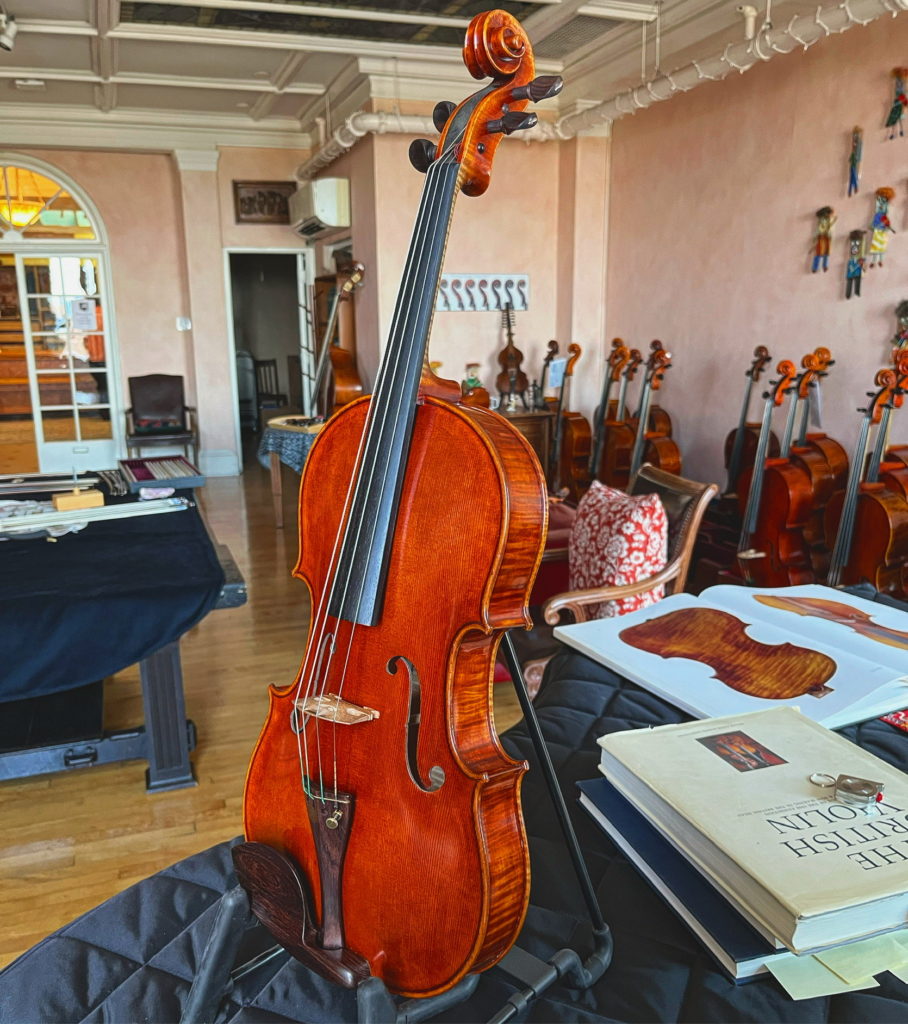
That’s the story of my instrument’s makeover and why I decided to change fittings. Thank you so much for reading! What do you think? Do you like the new fittings on my Kiernoziak viola? Let me know. Message me on Instagram @TheSergioLozano
If you enjoyed William Harris Lee & Company’s first blog please share it with your friends and family and on social media.
